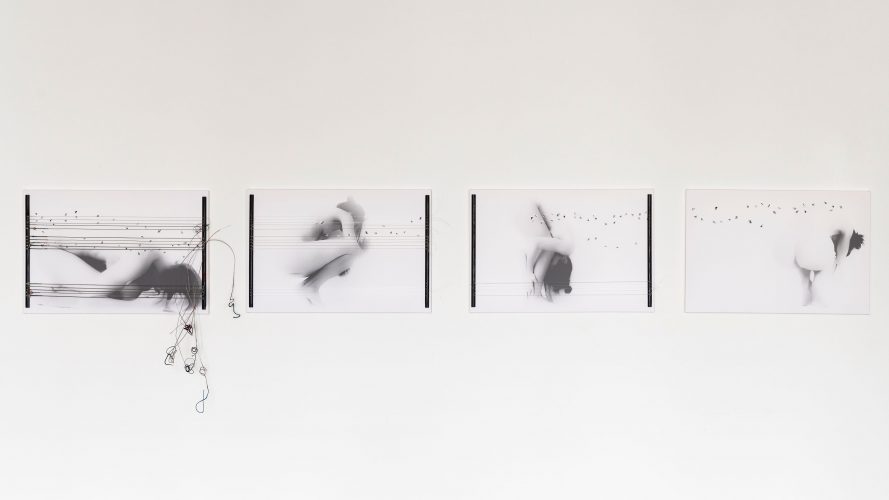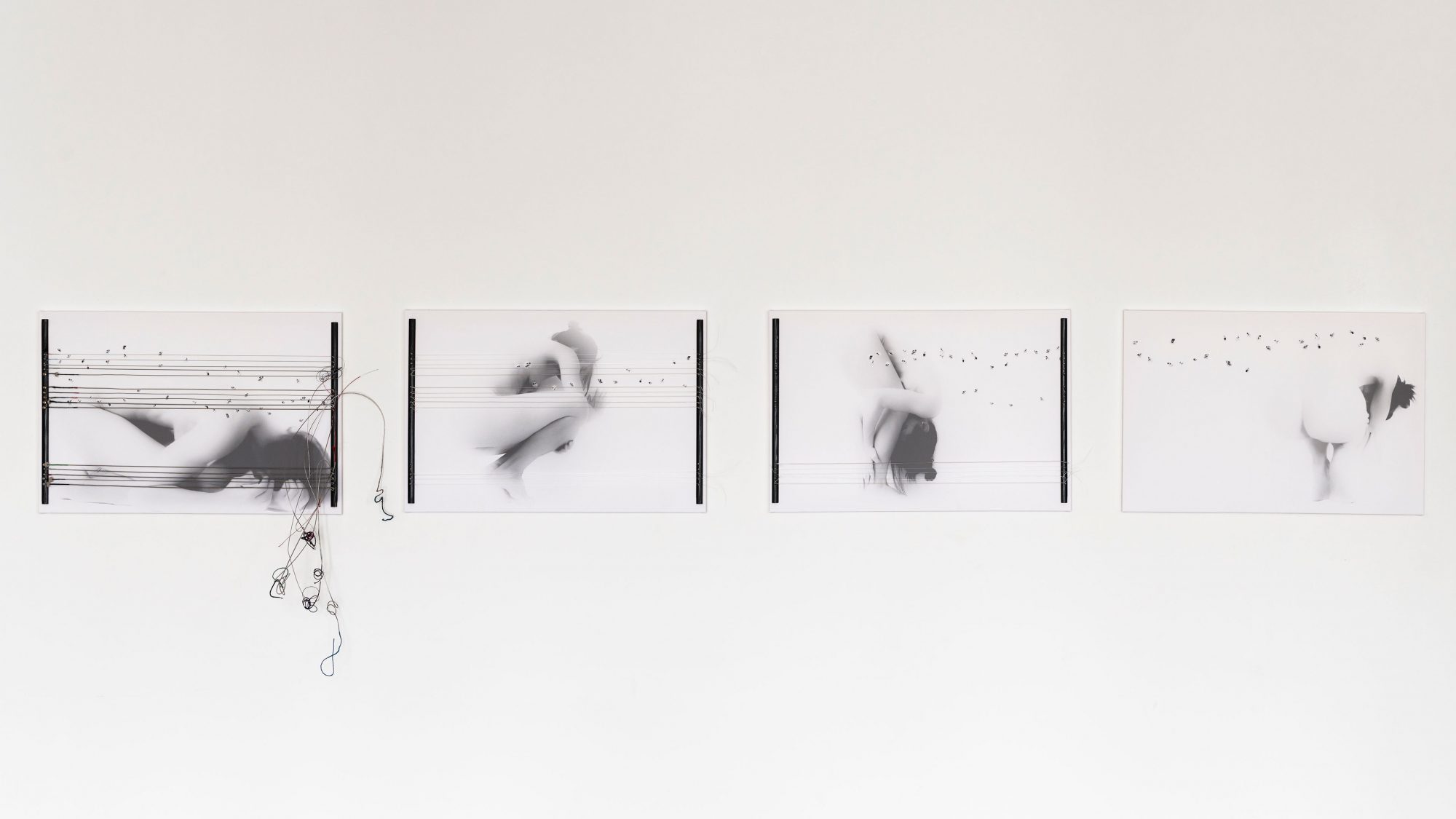between
the strings




Images by Daniel Jarosch
2020. Saiten auf Leinwand. je 90 × 60 cm
2020. strings on canvas. 90 × 60 cm each
[D] Ein Grund, der nicht das Fundament einer Begründung hat, ist ein beweglich gelagerter Grund – ein schwebender Grund –, der nicht der eine Grund und nicht das absolute Fundament ist. Dieser Grund schwebt über der Inkonsistenz eines Abgrundes, der sich des direkten und umfassenden Zugriffs entzieht. Die Figur des schwebenden Grundes zieht sich auf vielfältige Weise durch die Arbeiten von Judith Klemenc. Im Kontext der abendländischen Philosophie erscheint Nietzsches Zarathustra ein möglicher Bezugspunkt, der auf einem Seil tanzte, das keine Aufhängung hat. Hier vollführt weniger der Seiltänzer* das Wagnis als der vermeintlich sichere Grund, das Seil, selbst. Bei Judith Klemenc wird deutlich, wie fragil der weibliche Körper ohne Verankerung im Symbolischen schwebt. Eine ähnliche Bewegung vollzieht Luce Irigaray, indem sie dazu auffordert, im (abendländischen) Denken zuallererst einen Raum zu schaffen für jene Körper und deren Imaginationen, die dieses Denken bislang systematisch ausgeschlossen hat: die weiblichen Körper. Schwebend über diesem Nichts, befestigt Irigaray das Seil ihres seiltänzerischen Denkens ebenfalls nur lose, indem sie eine Praxis des mimetischen Schreibens erfindet. Aus dieser Schwebe heraus scheint Judith Klemenc’ Arbeit zu fragen: Wenn die Körper zwischen den Saiten schweben, wie können diese Körper beginnen zu spielen, wenn sie nicht länger gespielt werden wollen?
[EN] A reason which does not have the foundation of a rationale, is a movable reason – a floating reason – which is not the one reason and not the absolute foundation. This reason hovers over the inconsistency of an abyss, which eludes direct and comprehensive access. The figure of the floating ground runs through the works of Judith Klemenc in a variety of ways. In the context of Western philosophy, Nietzsche’s Zarathustra appears as a possible point of reference, dancing on an unmounted rope. Here it is less the tightrope walker who rather takes the risk than the supposedly safe ground, the rope. In Judith Klemenc’ work, it becomes clear how fragile the female body floats without anchoring in the symbolic. Luce Irigaray carries out a similar movement by calling upon (occidental) thinking to first and foremost create a space for those bodies and their imaginations that this thinking has systematically excluded up to now: the female body. Hovering above this nothingness, Irigaray also only loosely attaches the rope of her rope-dancing thinking by inventing a practice of mimetic writing. Out of this floating, Judith Klemenc’ work seems to ask: when the bodies float between the strings, how can these bodies begin to play when they no longer want to be played?
Elisabeth Schäfer
